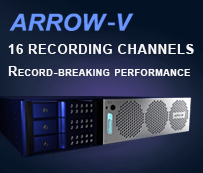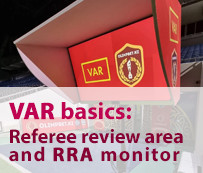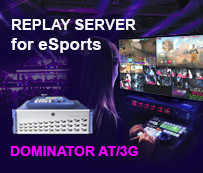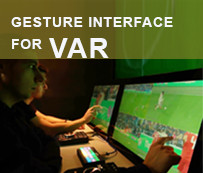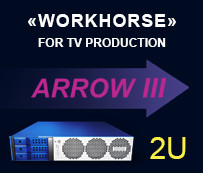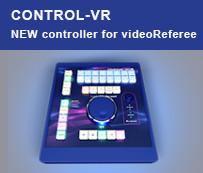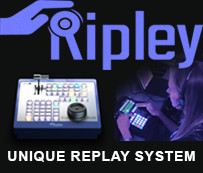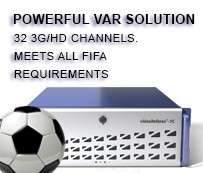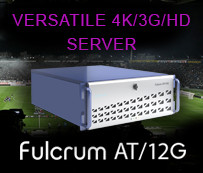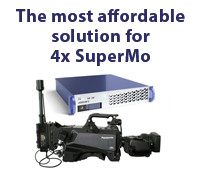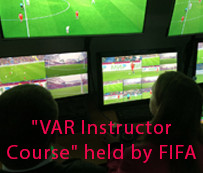- Details
Why high-speed cameras must be used in sports
The world of sports is undergoing continuous transformation and development. In order to maintain the highest standards of fairness in competitions, modern technology has become an indispensable ally for judges and referees.
High-speed cameras are recognized as an exceptionally useful asset for the purposes of precise observation and analysis of fast-moving action, as the human eye has perceptual limits.
In such critical circumstances, even the most minuscule movement has the power to dramatically alter the fate of an entire competition. High-speed cameras, acting as the all-seeing eyes, offer referees and sports officials an unparalleled, meticulous view of the events unfolding before them.
High-speed cameras provide not only aesthetic value but also precise technical data. Their primary functions include:
- Enhancing the accuracy of video refereeing systems;
- Determining the exact positions of athletes, equipment, and field markings;
- Capturing beautiful moments and emotional content.
Modern high-speed cameras provide flexible placement options, feature PoE/Ethernet connectivity for convenient management and control, and require minimal technical expertise to operate effectively. They also are compatible with widely available standard equipment and can be easily set up for use during competitions.
- Details
The world of video production is constantly evolving, and one of the latest advancements is the SMPTE ST 2110 suite of standards. It has the potential to transform the way media is transmitted and processed in the whole industry. Let’s take a closer look at the advantages ST 2110 provides and its influence on the industry’s development.
The Evolution of ST 2110
The ST 2110 standard was introduced in 2017. At that time, its implementation was challenging and financially unfeasible for most studios, with the exception of major ones. However, with the advancement of electronics and software, as well as the contributions of companies like Blackmagic Design, ST 2110 is now poised to become a breakthrough in media transmission technology for video production.
The Revolutionary Benefits of ST 2110
The ST 2110 standard addresses the shortcomings of the previous SMPTE standards and introduces a new level of efficiency, reliability and comfort in video production.
One of the primary advantages is the need for considerably fewer connections. Also, instead of point-to-point connections, IP technologies are used, allowing multiple streams to be transmitted over TCP/IP.
Here are some specific benefits of using ST 2110:
- Details
Simplifying complex system management for broadcasting, LED shows, and sports video refereeing
With intricate systems, such as those involving server networks, interface and configuration software play a vital role. These tools are designed to streamline the management and setup of such systems, enhancing accessibility for users who may lack in-depth technical expertise. This is particularly important in environments requiring rapid deployment and efficient operation, such as in broadcasting live events, production of huge LED surface shows and sports video refereeing.
Understanding launcher applications hinges on grasping the concept of their interface. While numerous definitions regarding the ideal interface exist, Igor Vitiorets, CTO at SLOMO.TV, thinks that the most effective interface facilitates the execution of recurring tasks in the simplest, fastest and most intuitive way possible. This is particularly important in complex systems like server networks, intercom networks, OB van configurations, where users require access to a diverse array of functionalities. This approach ensures that any operator can quickly adapt to the system and perform their tasks efficiently, reducing the learning curve and increasing productivity.
- Details
The video refereeing system is an important component of modern sports, providing the opportunity to make correct decisions based on factual circumstances that may not be detected with the naked eye.
Video refereeing systems require extensive management: human resources, technical resources, administrative resources, regulations, interaction between teams and referees, operators of the video systems, and many more.
Challenges associated with different setups of VAR systems
Based on our experience, the current significant challenge is the lack of sufficiently qualified personnel, which affects everything. By utilizing local systems situated at the stadium or match venue, the issue is that the working staff are effectively unavailable for a specific duration, being dedicated solely to one match, which additionally includes travel to and from the event. The complication is that personnel assigned to one match cannot be utilized for other events for a significant time.
- Details
SLOMO.TV is excited to introduce the new Arrow 4K, a new broadcast-grade 2U server designed to provide an easy and affordable way to work with 4K replays, adding to the 4K server range following the success of the Simple R 4K in 2023.
The Arrow 4K is the successor to the highly popular and reliable multi-channel recording and replay server, the Arrow III. Its compact dimensions (2U, 88 x 482 x 512 mm) and lightweight design (12 kg) make it an ideal choice for mobile solutions and integration into existing studio and OB van infrastructures.
Professional 4K replays have never been this accessible
The availability of cost-effective 4K cameras like the Blackmagic URSA Broadcast has enabled small and medium-sized companies to produce high-quality 4K sports broadcasts. SLOMO.TV has developed the Arrow 4K system to cater to URSA Broadcast users, allowing smaller studios to compete in the sports video production market.
With 4K Replay mode supporting 4 recording channels, Super Motion camera support and network functionality, the Arrow 4K is an ideal foundation for a multichannel recording and replay OB van subsystem offering compact, broadcast-grade instant slow-motion replays in 4K. This allows smaller studios to match the capabilities of larger, more expensive OB vans. With the Arrow 4K, SLOMO.TV continues to push the boundaries of 4K broadcasting, making it more accessible and affordable for companies of all sizes.
- Details
In modern sport, the quest for accuracy and fairness in decision-making has led to the integration of advanced technologies, particularly high-speed cameras. These cameras play a crucial role in various sports, especially in scenarios where split-second actions, where the human eye cannot capture the details, can significantly affect the outcome of a match. High-speed cameras provide an extra-detailed view of such events, helping referees and officials to make more informed decisions.
Although broadcast cameras capable of capturing high-speed video are widely used in sports, they have some limitations when used for video judging. Their availability is not always guaranteed, as broadcasters may have their own priorities or be unable to provide the footage for VAR purposes.
Camera and server integration
In order to be independent of the broadcasters and to be able to use the high-speed cameras in video refereeing, the user needs a balanced solution, which consists of two main components: the camera and the server. The server must be able to work seamlessly with the camera and vice versa.
- Details
In the rapidly evolving world of e-Sports the demand for high-quality engaging content has never been greater. Fans expect to see not only the action, but also the details that make each game unique.
By definition, e-Sports can be classified as a sport because it involves competitive activity. However, the broadcasting of e-Sports competitions is different from traditional sports.
In traditional team sports, the focus is on the ball or puck and the competition around it. In contrast, e-Sports such as Counter-Strike: Global Offensive, Call of Duty, League of Legends and DotA 2 are multiplayer video game competitions where every player's actions matter. This increases the complexity of broadcasting such competitions.
The broadcast director should be a professional who has to understand and feel the game and its specifics, the teams and individual players.
In most cases during an e-Sports competition, there are many rounds in a single game with short breaks. The director and producer have very little time to show the best moments of each round with commentary and explanations. Therefore, the replays play a more important role in e-Sports broadcasts than in traditional sports.
- Details
Team sports have rules that regulate gameplay and procedural aspects. These rules include keeping score, setting time limits for different parts of the game, and administering penalties. In the past, referees used stopwatches to keep track of the timing of the game. However, this task became quite challenging, especially in situations where multiple players were penalised at different times.
Main concepts of scoreboard control systems
Specialised computers, called scoreboard controllers, were developed to deal with these complexities by managing the timing and scorekeeping aspects of a game. It is particularly important in fast-paced sports such as basketball and ice hockey, where accurate timekeeping and score management are essential for fair play.
Scoreboard controllers consist of several main blocks: a computer with specialised software, a display of current information, a customised keyboard and various interfaces for connecting external devices. The most popular scoreboard controllers combine all these blocks in a compact device with low power consumption, high reliability and protection against accidental data erasure.
- Details
Video refereeing and video broadcasting require active communication between team members to ensure smooth operation.
In video refereeing, effective communication is achieved through the use of an external intercom system that can be installed in a VOR, OB van, or VAR center. The challenge with using external intercoms is that they need to be reliably integrated into the VAR system and the overall communications network in order to function effectively while recording conversations.
Similarly, for TV crews, continuous live communication is an integral part of the workflow, especially in multi-channel productions. The Replay Operator (RO) coordinates with many staff members, including directors, engineers, camera operators, and other ROs. However, standard broadcast intercom solutions typically cannot provide additional functionality in a comprehensive system.
SLS Intercom for VAR
To simplify the communication system and reduce the number of video production system components, SLOMO.TV developed SLS Intercom, a communication subsystem that can be embedded directly into the videoReferee® server.
The benefits of the SLOMO.TV intercom option for VAR systems:
- Fewer external components make the solution more economical. Also, the reliability of the integrated system is increased.
- Any USB or wireless Bluetooth headset is compatible with the system – both specialized professional intercom headsets and much more affordable and widely available basic computer headsets can be used. Moreover, VAR team members can use their own personal headset, which is particularly important in a post-pandemic world, as personal equipment is more hygienic and secure.
- Up to 16 intercom users, both internal and external, can be connected to the SLS Intercom. A configurable, user-controlled intercom matrix allows groups of users to be arranged in a variety of interaction scenarios and switched quickly, just as in other high-end intercom systems.
Broadcasting Challenges and How Professionals Handle Them: The Role of Redundancy in SLOMO.TV System
- Details
Live broadcasting demands professionals to be on their toes and ready for any hitch. They must stay one step ahead and prevent problems before they happen, equipped with the right tools and knowledge to tackle issues swiftly and effectively. Having a robust backup plan in case of equipment failure or internet connection loss, is not an option, but a necessity.
Managing unreliable networks is a frequent issue in live broadcasting. Even in regions with good coverage, there is always a risk that your connection will become unstable. To tackle this, many professionals employ a range of strategies, such as using backup connections and servers.
Professionals often carry a variety of converters and adapters to ensure compatibility between different devices. For instance, they might use SDI-HDMI and SDI-NDI converters to connect cameras to various types of displays, or HDMI cables to link up with other gadgets.
Video engineers always invest in redundant hardware and software solutions to make sure their broadcasts are not interrupted by technical failures. They may use several hard drives for recording, so if one fails, they can still access the footage from another. They also utilize specialized software that can keep functioning even when some parts of their system fail.
A classic example of the importance of redundancy in video production is capturing events or effects that can only happen once. If the camera equipment fails at that critical moment, the footage is lost forever because it is impossible to recreate the entire scene. The cost of such a mistake is incredibly high.
However, if a redundant system is in place, such as a separate camera output connected to a server in the studio, the footage is recorded and preserved. The backup system gives the production team peace of mind and ensures they have a reliable source of footage in the event of a technical problem.




